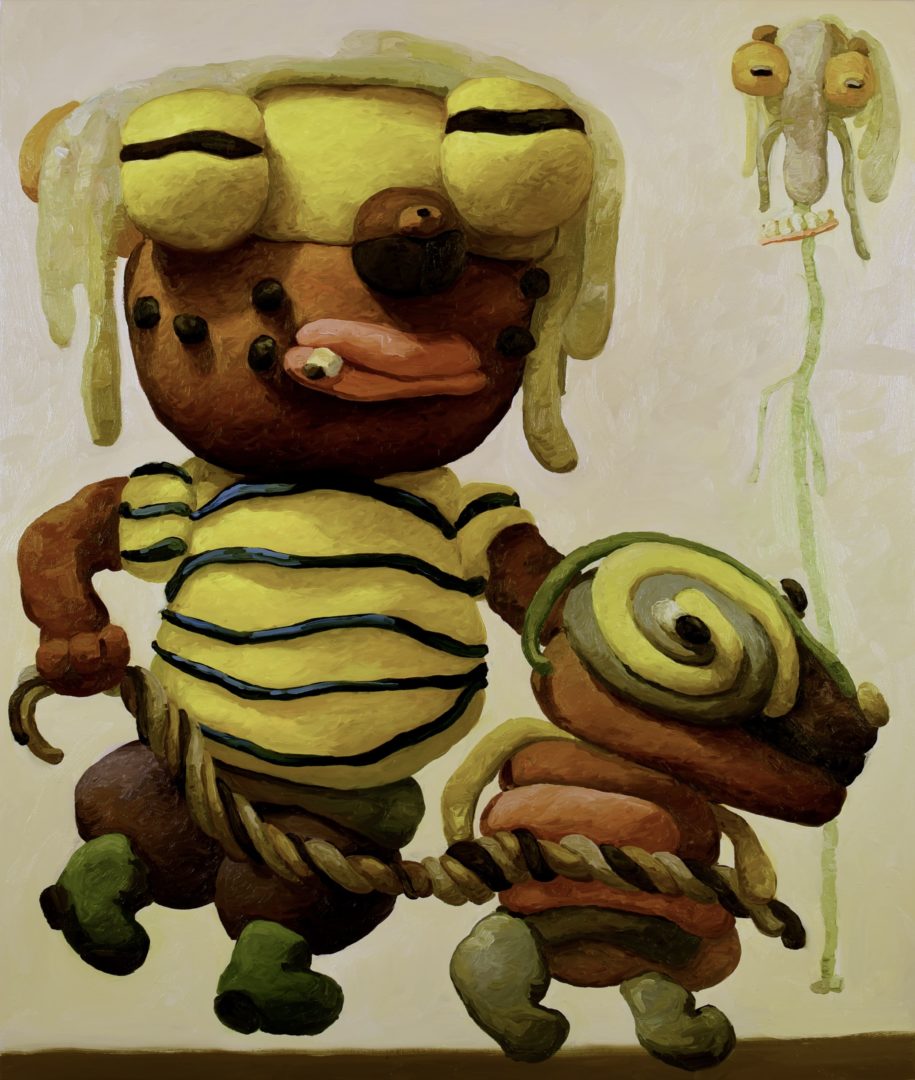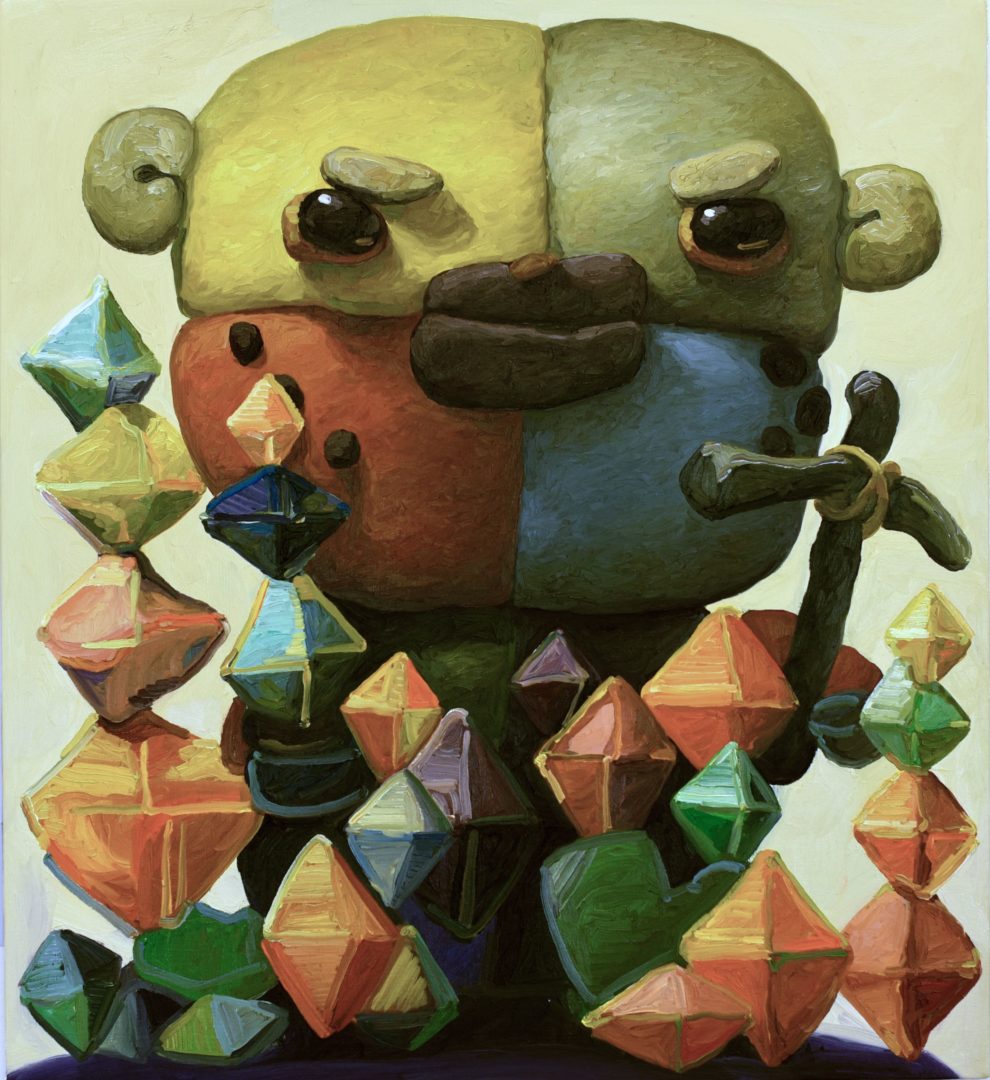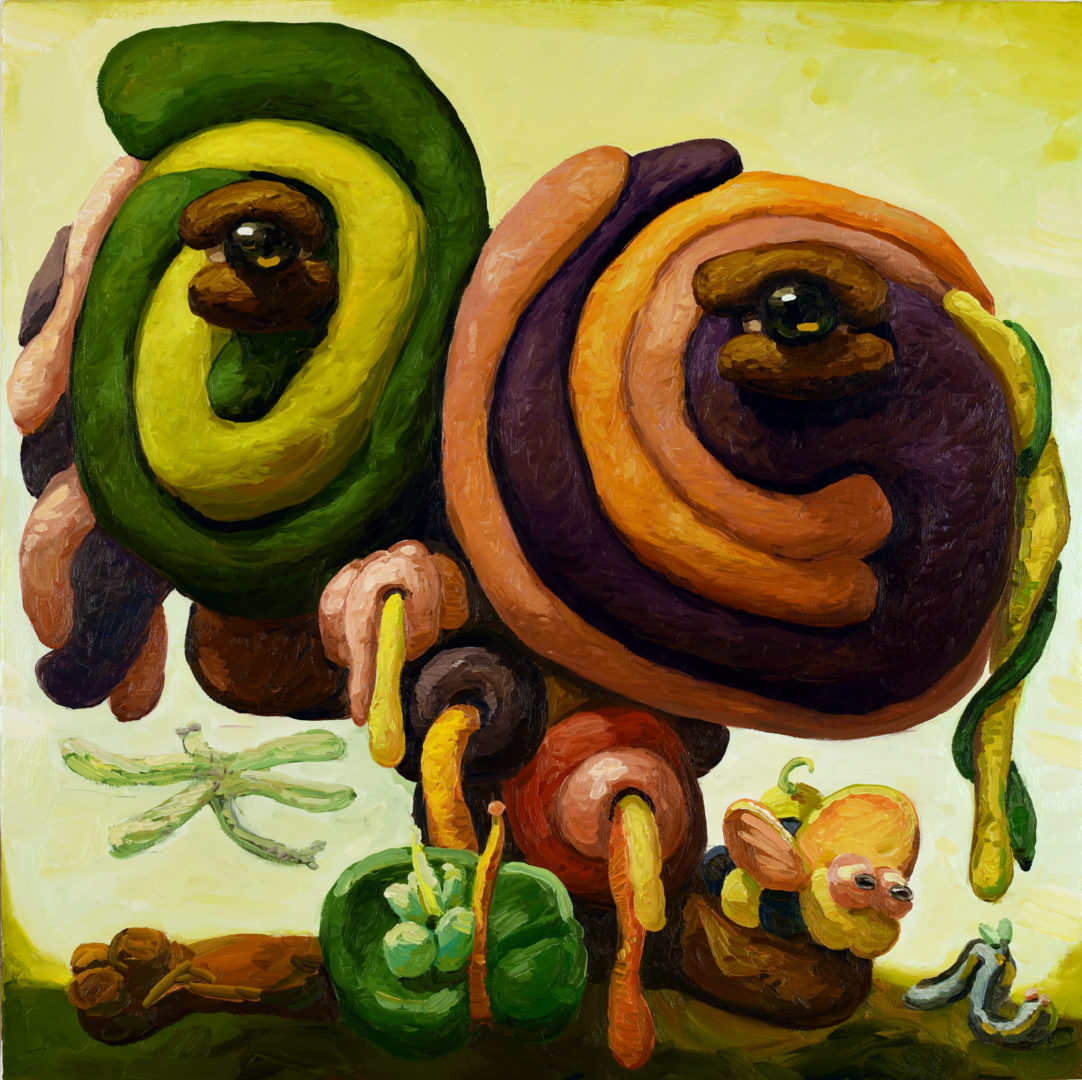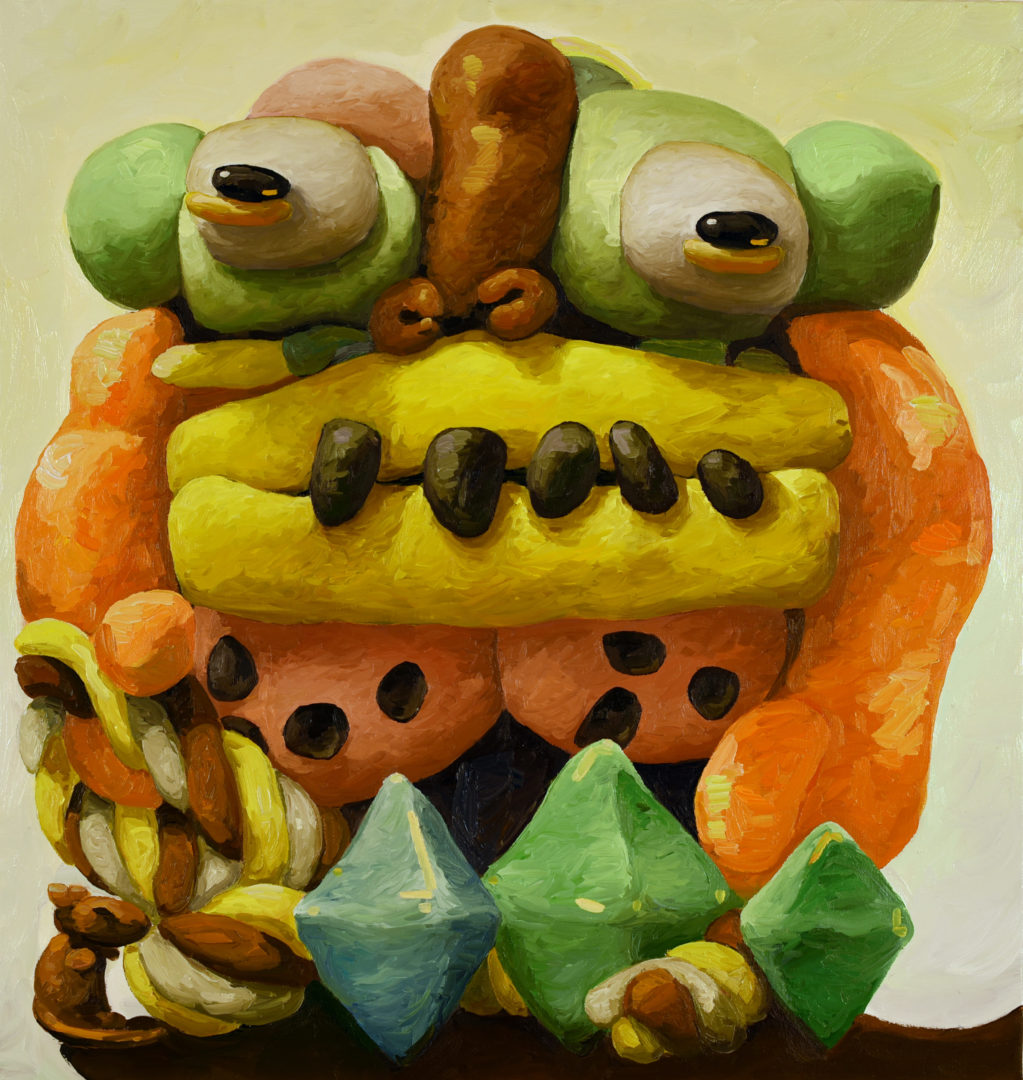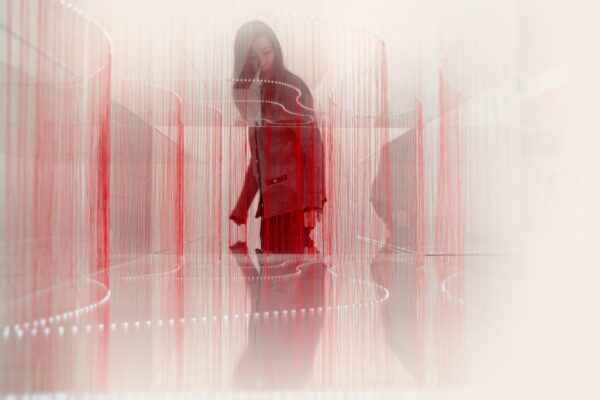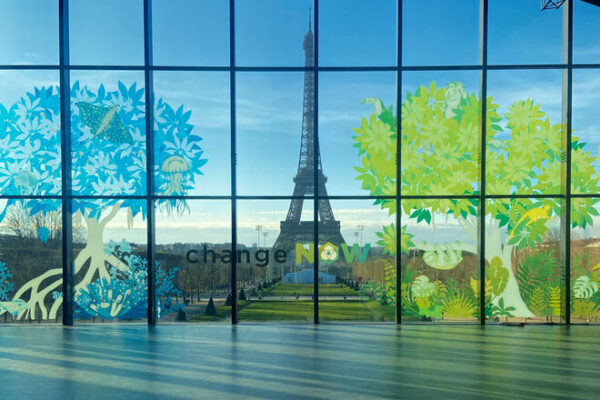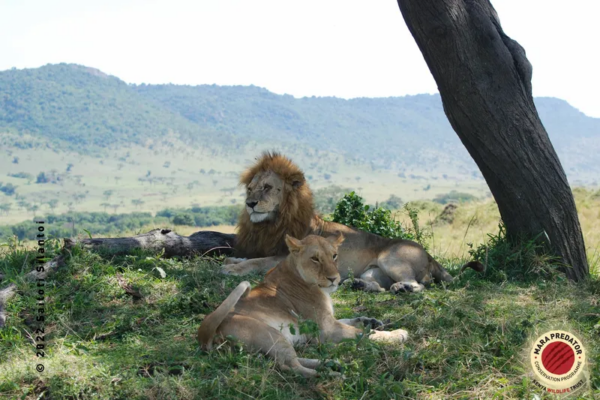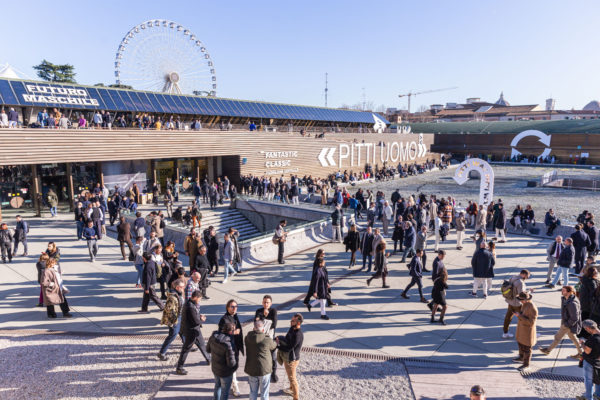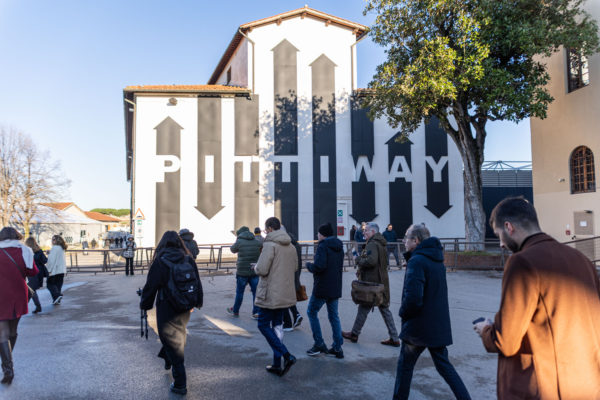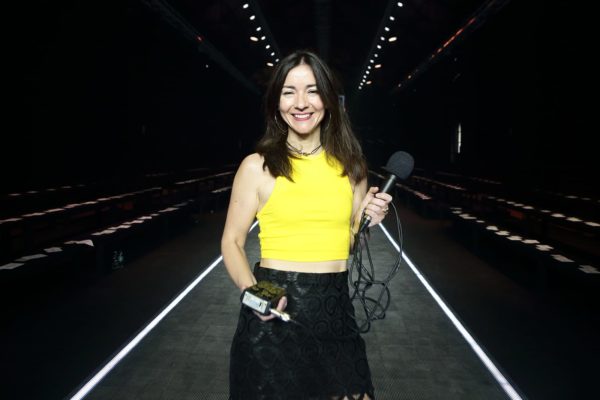What is the difference beween imagination and reality in Art? An amazing discussion with Peter Opheim on the creative process.
December, 8th 2021 | Paris
By Delphine Souquet
The article below is an extract of our discussion with many quotes from Peter Opheim, in an attempt to be as close to his thoughts as possible.
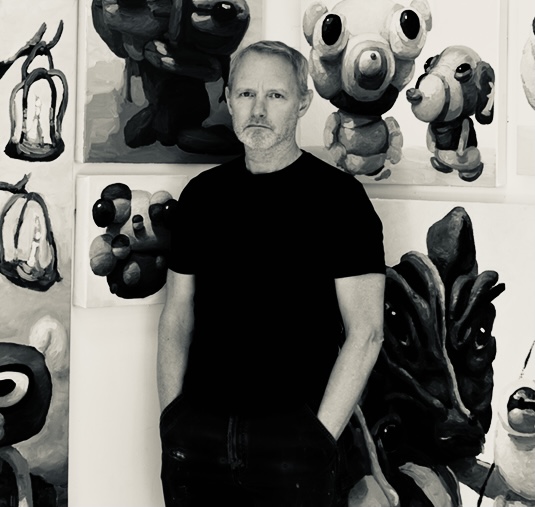
Who is the American Artist, Peter Opheim?
My guest lives and works between New York and San Cristobal, New Mexico – where his studio is located – and has exhibited his paintings around the world.
Podcast INTRO 🎙
What is truth and reality? How can imaginary figures teach us a lot about our Humanity? When I met the American artist Peter Opheim, I knew that the discussion would be exciting and surprising for the listeners of the podcast.
I was ready to ask to my guest all the questions that no one had dared to ask on his paintings because of intimidation or fear of missing the work.
The paintings of Peter figuring characters from his imagination, small monsters, plants or animals in the form of sculptures in modeling clays are just perfect and eye catching to talk about the creative process in Art. Peter is exhibiting in Russia, Taiwan, Japan, London, New York and Los Angeles. He is well known for his surprising, sometimes provocative style figuring characters from his imagination.
I have never been so far in a discussion on the creative process with an artist on the podcast. Thanks to Peter for his generosity and great humility sharing his thoughts and feelings with us on the podcast removing resistance, just the way he does on the canvas.
Presentation of his solo exhibition in Paris
I created specifically this series of paintings for the Cohle gallery in Paris : it centers around a large painting that is called Billy looking for the lost bird …
Peter Opheim
Delphine : You’re an International artist, so how come this first solo exhibition now in Paris?
Peter : I’ve shown with Cohle gallery for a couple of years and this is the first time that we had an opportunity to show a solo exhibition here in Paris and the work that i created for this exhibition was specifically for the Cohle gallery.
So there’s a dozen paintings here and it’s divided five six paintings of the figures in the swamp and then five six paintings of the figures in the cave and then the centerpiece of the painting is billy looking for the lost bird.
If i could talk about that for a little bit it centers around a large painting that is called Billy looking for the lost bird and in this is a figure with his friend and they have a rope and they’re going on an adventure.
But for me the story didn’t start here the story started in say a previous chapter with the paintings and that is that there was a crew on a boat and this boat something happens to it and it explodes and the crew they land on an island and on the island they have encounters with various creatures man-eating plants cannibals and and other mysterious figures and then the paintings in this exhibition actually take place on this island in a different place so it starts with this painting of this figure and he’s walking and looking around and he is in the process he goes through a swamp so all of these paintings are figures that are half plant half animal half imaginary and there’s flowers and oozing parts and insects dragonflies worms bees that are all part of these figures.
A little bit of an allegory of our desires
And then the second part of this adventure is that he ends up going into a cave and in the cave you see these figures that are kind of like an ogre or a troll and these are the miners in the cave and the thing with them is that in some places they have their tool but they’re also becoming the gems are becoming part of them and i think it’s a little bit of an allegory of our desires that we have to be a little bit careful of maybe not going too far in what we want or we become that and lose ourselves …
Delphine : your central character’s name is Billy, do they have all names?
They do! Sometimes i’ll use names that we might know and then sometimes i might give them a name that has like a Norwegian or French or you know where they’re being shown that they might have a historical kind of reference to that. In some of the paintings here i’ve also given them imaginary latin names. The ones the figures that are in the swamp, i wanted to be like as if they were a plant, so i translated in English to a Latin name, a contemporary latin name for the plant.
Where imagination becomes reality in Art : the creative process
Before i was doing abstract work and the reason that i stopped doing that is because i felt that it didn’t address humanity enough …
Peter Opheim
Delphine : It seems you are telling a fiction story with yours paintings, but what is the correct word to talk about these creatures, fantasy or imaginary?
So the correct words are universe and imagination for my art work but i should say that when i first started making these paintings about 10 12 years ago before that i was doing abstract work. And the reason that i stopped doing that is because i felt that it didn’t address humanity enough.
I felt that work needed to be from now you know created that was very personal but not private. I felt that abstraction as beautiful as it is had run its course so what i wanted to do was to create works using figures that i created from my imagination in the same way that an abstract painting is put together but to make these into an imaginary character that tells us what it means to be human.
And in fact for me i consider them very real i consider it somewhat say of a different universe, or a different way of seeing things.
I start with physical piece of modeling clay
“This is the way that i create them. My process is that i start with physical piece of modeling clay and then from that i paint directly i don’t take photographs and it’s about looking and experiencing it .
So it’s about humanity, i don’t consider them fantasy at all …
Peter Opheim
But the important thing is that it’s the paintings themselves that are what is supposed to feel real what it’s supposed to have say a soul to it. They almost function like sculpture if this figure existed in real life this would be its actual size and i consider them moving forward in thinking so they’re not fantasy they’re not about the past they’re not political i have a part in making them but my role is a little bit undefined in that so that they’re not supposed to be about me even though they might have aspects of me in it.”
The creative imagination in Art : removing resistance
What i do in my work is about removing resistance
Delphine : What is the role of starting with modeling clay?
When you make something physically so much of what i do in my work is about removing resistance and if you just sit down with a piece of paper and a pencil and you decide that you want to draw something you’ll be limited by what you know and your brain functions in a very kind of limited way.
The figures that you see here they’re just as much a surprise to me as they are to anyone else
If you can find a process which i did with starting with making a physical object it’s about motion and movement so that is transformed into a physical object that surprises me so to a certain extent. The figures that you see here they’re just as much a surprise to me as they are to anyone else i never would have expected them. And they just kind of happen it’s an internal process that i just allow to happen.
Imagination to Art
Imagination has been lacking in a lot of Art
Delphine : What is the importance of Imagination in Art for you?
I think that it’s been lacking in a lot of art for way too long. And i think we all have these beautiful imaginations and that we should just allow ourselves to go with that and use it.
I sort of think of them as individual people
Something that i do with my work, i’ve made hundreds of different characters and they’re only created and painted once and then they’re never repeated and in that sense i sort of think of them as individual people such as you know, you and i we’re unique, and we have our own special qualities and our contributions to the world. So to me it doesn’t make any sense to paint a figure twice because it’s created in its real as it exists on the canvas.
Delphine : isn’t it kind of a reflection on the universe a conscious vision of the universe that you are developing ?
They are a reflection of the complexities that we have within us
I would agree i think so, i’m not exactly sure how these function in the world and their place, but i would like to think in the most optimistic way that they are a reflection of all the various, not only different people, but the complexities that we have within us.
Art and its meaning vs being real
But that being said, i don’t think that artwork should be one extreme or another. And i like artwork that allows you to come to it on your own terms and interpret it. So for me, i find that the most interesting creative projects are ones in which i can bring my own intelligence and past and culture to it.
there’s no right or wrong way to come to the work
So different places have different response to the work. So for example when i show in Japan, they are very used to seeing this type of imaginary figure and they have a history of imaginary creatures that have very specific roles. Now i don’t go into the depth that they do and some of these are very you know they’ve been creating these for hundreds of years.
Seeing the types of paintings that I do, in Japanese and in Chinese culture, they have a very different response than say how it might be viewed in Moscow or in London or in Paris. And to me, i think that’s all wonderful, because there’s no right or wrong way to come to the work or i’m just presenting my particular vision and however it might be interpreted i think is wonderful. I have no right or wrong way that the work should be seen and i find it very pleasurable just to see the work in these different contexts.
To me what’s important is that something has to be honest and it has to be real
Peter Opheim
Delphine : Do you write a script of your body of work, like in a fiction, or do you rely on intuition?
Well to me what’s important is that something has to be honest and it has to be real. And we can sometimes think of things ahead of time, but it might not really be the truth. I think that we need to allow ourselves not to hold on to a particular idea and to move where the world or your thoughts might be taking you.
The reason why so it’s not only truth, it moves you into a place that you don’t know because if you just preconceive something all that you’ve done is you’re just telling again and again what you already know. If you want to move beyond that to an area that you don’t understand the only way that you will that can kind of happen is that you just let go of those preconceived notions. It’s a little bit tricky because my work just doesn’t go in every single direction on one hand but on the other hand there is that possibility that it does.
Imaginary figures and spirituality
For the practitioners of Buddhism, the figure that you’re looking at is just the entrance into the spirituality
Delphine : what is the reaction to your art in Asia where spirituality is more important than in the western world because of tradition ?
So it’s my understanding that, for example in buddhist art, you have a figure of a buddha. But the practitioners of Buddhism understand that the figure that you’re looking at is just the entrance into the spirituality so that an object isn’t in the end in itself. It is just the very beginning and they also like things that are in another way very you know imaginary. So you have the acceptance of the imaginary, you have a religious idea that has iconography where they understand that this is just the beginning of the journey. And i think that is probably a very good way to think about one of the differences.
Delphine : I don’t know wether you’ve heard of the worldwide Best seller Author on meditation and consciousness, an international public figure, named Sadhguru? He’s talking about a certain vision of humanity and the universe, where he sees a balance between the mind, the body and our cosmic identity. What is your vision of the universe, the human and the non human parts in your work?
To use a literary reference, I don’t know how the chapter is going to end
So i’m going to answer this in somewhat of a different way, because i think that it is not for me to know and i can look and i can listen but what i think is important is that i live intuitively in the world.
And for me it’s about creating things, so i have a particular vision that is very important to me but i only know that say if we’re going to use a literary reference, one page at a time, so that i don’t know how the chapter is going to end. I certainly don’t know how the book is going to be read.
In the same way when i create a painting, it’s just one painting at a time, and i finish it, and then i move on to the next so as far as how i see a place in the world i don’t know that i’m supposed to be aware of that i can think about it. I’m supposed to be in it, and i’m supposed to be living and discovering say, the next place or thought, that i’m supposed to go to.
What is success?
These figures are just as much a surprise to me as they are to anyone else
In my practice i try to get out of my head, because i’m already living in my head in this world of imagination.
So what i’m trying to do is remove myself from my head and my thinking and these works are a reflection of that. Because i never would have thought that i would make these works if you put me into a time machine whatever 15 25 years ago, and you said these are your paintings, i would say no that’s not possible, i don’t have these kinds of things around me! I don’t dress this way, where is this coming from? When you see a figure of mine it’s identifiable from one to the next so to speak but they’re all very different but they’re just as much like i’ve said they’re just as much a surprise to me as they are to anyone else.
When i first started making these paintings, i thought “oh i really like these but nobody else will ever be interested”…
Delphine : You are selling your work all over the world now, we can call it a huge success! Which advice would you give to a young artist or anybody struggling to be successful to the world?
When i started making these paintings like i said i was making abstract work i finished a painting and i said that’s it and i’m not making any more but i didn’t have anything to replace it. So i sat down with a piece of paper in front of my abstract work and i started to do drawings and in the drawings just like like how you might look at clouds so to speak and see an animal, i started to see these animals in my paintings and there they were these imaginary figures. Over like a several year process, all the abstraction went away and i was just left with the figure.
When i first started making these paintings, i thought oh i really like these but nobody else will ever be interested and i thought oh this is it you know! And i had my sons that i was raising, and I thought, i really thought i would never sell another painting again.
And you know then i continued for just a year or so and finished a body of work and they were shown quite immediately in Seoul Korea and then i’ve been showing them ever since and i just had an exhibition so currently in London which just closed i have this exhibition in paris at Cohle gallery, i have a gallery in Madrid and in Shanghai for group exhibitions and then i have solo shows coming up scheduled for next year in Taiwan, Japan and in New York city among other places.
But for me like i i’m very happy for that but it isn’t what’s important to me. It is that i follow the particular vision as it’s being presented to myself and i’m just happy that other people are responding and i think that’s really wonderful i’m very happy for that!
It is not for you to judge whether it is good or not.
It is important is to do things. it is not for you to judge whether it is good or not. What is important is to be trying to bring things out into the world. And you will see and learn from what the universe brings you in return.
Now let’s listen to the podcast
If you are curious to know more about my guest, his education, his daily routine in life, I invite you to listen to the full audio podcast using the link at the beginning of this article.
I now hand over to the artist Peter Opheim and our discussion will hopefully serve to demonstrate that in Art there are no right or wrong questions to ask, that you don’t need to be cultured to engage in exciting discussions with the artist about his work. Art allows us to give space to our sensibility and our emotions. It is not with our rationality that we must look at a painting but by giving free rein to our feelings and emotions.
If you want to know more :
- See the exhibition of Peter Opheim at the Cohle Gallery in Paris following this link https://www.cohlegallery.com/peter-opheim
- If you liked this podcast interview, you might as well listen and read my article with the French Street Artist Fenx recorded in his Parisian atelier
Now, let’s start listening to our conversation with Peter Opheim on 2goodmedia and don’t forget to subscribe to the Podcast if you want to be part of our global community of Artist and Designers worldwide.
Subscribe to 2Goodmedia podcast
Language of the episode : English. The interview is always in the original language of the interviewee to hear the direct voice of people that shape the Art and Fashion industry today.
We produce cool contents (photos, videos and podcasts) for a pure entertainment experience. We talk about Fashion, Art, cool events. We are driven by Passion. If you like this format of Podcast – Audio, Editorial and Visual let me know in comments on ITunes and don’t forget to give a 5 stars review to support the show!
For comments, questions, or speaker ideas, please e-mail: Delphine@2goodmedia.com and DM on Instagram @2goodmedia
Credits : Pictures and paintings are from Peter Opheim, courtesy of Peter Opheim, all rights reserved
A complimentary gift for your loyalty!
As a token of appreciation for your loyalty, 2GoodMedia partners with WhatRocks to offer complimentary crypto for you to donate to your charities of choice from the list of 200+ organizations across the world.
Already a WhatRocks member?
Scan (or click from your mobile) the QR code below to collect your crypto rewards for good.
Not a WhatRocks member yet?
Click here to open your free WhatRocks account


